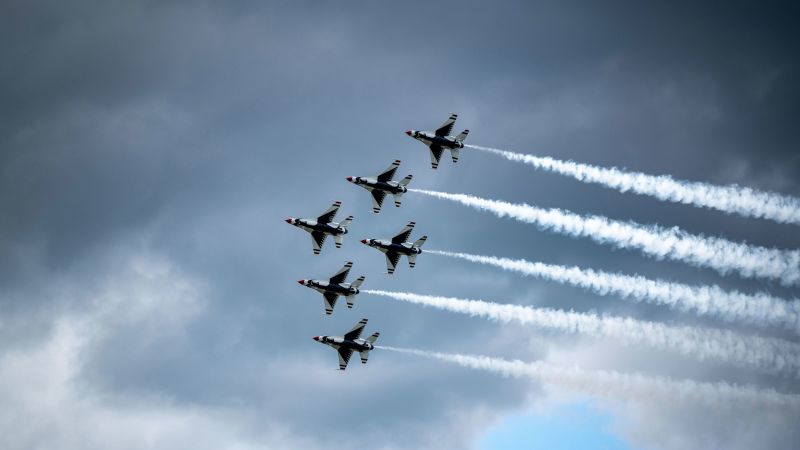In a small conference room just off a runway at Langley Air Force Base in Virginia, some of the US Air Force’s most elite F-16 pilots were gathered. They spoke casually to one another, snacking on granola bars and fruit; water bottles and paper littered the table beneath laptops and tablets.
The 12-person team might have seemed relaxed despite the dangerous maneuvers they were able to pull off, but their focus on the task ahead was clear.
The Thunderbirds are the Air Force’s premier demonstration team, performing in dozens of air shows around the country every year. This year marks the team’s 70th anniversary – it was established in 1953, six years after the Air Force split from the Army and became its own service. The intent, according to the team’s current commander and Thunderbird #1 Lt. Col. Justin Elliott – known to his teammates simply as “one” or “boss” – was to “connect the American population to its military at a time when institutional trust was challenged.”
It’s a challenge the Air Force, and military as a whole, is facing again.
The Navy, Army and Air Force have all said they do not expect to meet their recruiting goals this year, continuing a challenging trend from 2022, which saw record lows. For months, military leaders have pointed to the economy, a low desire to serve and a lack of knowledge among young people about what the military does as factors that are hurting recruitment.
But while the recruiting situation has become more dire over the last couple of years, the mission generally hasn’t changed for the Thunderbirds, who this year have more than 30 air shows scheduled around the country. Throughout their travels, the team regularly engages with the public, hoping to give people everywhere a peak behind the curtain of military service.
“We’ve been there many times in history,” Elliott told CNN about the gap between the American public and its military.
“It is a good thing to be unifying force in a dividing time,” he added, “to create a beacon of excellence that people can look up to and say, ‘I don’t care if you’ve been here for five minutes or five generations, we’re your Air Force.’”
The pilots flying for the Thunderbirds – who almost exclusively call one another by their position number on the team or their call signs – are based out of Nellis Air Force Base, Nevada. But they spend the vast majority of their two-year assignment with the Thunderbirds on the road, either rehearsing for air shows, flying in them or traveling to the next one.
That time on the road was increased by Elliott, who said it was critical that the team as a whole – including more than 100 enlisted airmen who monitor the aircraft, repair and inspect fuel systems, and maintain oxygen masks and parachutes – is able to practice the other parts of the show, which help keep the pilots safe.
Despite the ease that the six demo pilots project, the flying they do is inherently dangerous and made possible by the meticulous preparation happening behind the scenes. Elliott, who has flown 30 different aircraft with more than 2,555 total flight hours throughout his career, attended the Air Force’s Weapons School and served as an operational and experimental test pilot. He said the flying he does with the Thunderbirds is the “hardest thing I’ve ever done.”
CNN was invited earlier this month to ride along with a pilot in his F-16 as the team rehearsed for the weekend’s show. It was the first time a guest was able to watch from the air as the demo pilots rehearsed their carefully choreographed barrel rolls, aileron rolls, and flew just 18 inches apart in the team’s famous four-ship diamond formation.
Ahead of the flight, guests flying with the team are required to go through training to prepare for things such as gravity force (G-force) or even possible ejection from the aircraft. Squeeze the muscles in your lower body to push the blood back up to your head, so you don’t pass out; breathe in a specific rhythm called hook breathing; lean your head back so you don’t feel the weight of increased gravity on your neck.

And, just as important, avoid hitting or touching certain buttons, levers or switches in the cockpit.
It doesn’t seem like much to think about: Squeeze, breath, don’t touch anything. But that’s to say nothing of the additional demands of being an F-16 pilot, which require taking all those steps to stay conscious and simultaneously maintaining the presence of mind to fly safely.
And in the case of the Thunderbirds, to make it all look and sound effortless.
While CNN was in the air with Lt. Col. Ryan “Slinga” Yingling, Thunderbird #7 and director of operations, the six performing pilots ran through the show they would do for a crowd below just days later. Despite the difficulty of the maneuvers they were carrying out, over the radio they may as well have been commenting on the weather or a sporting event.
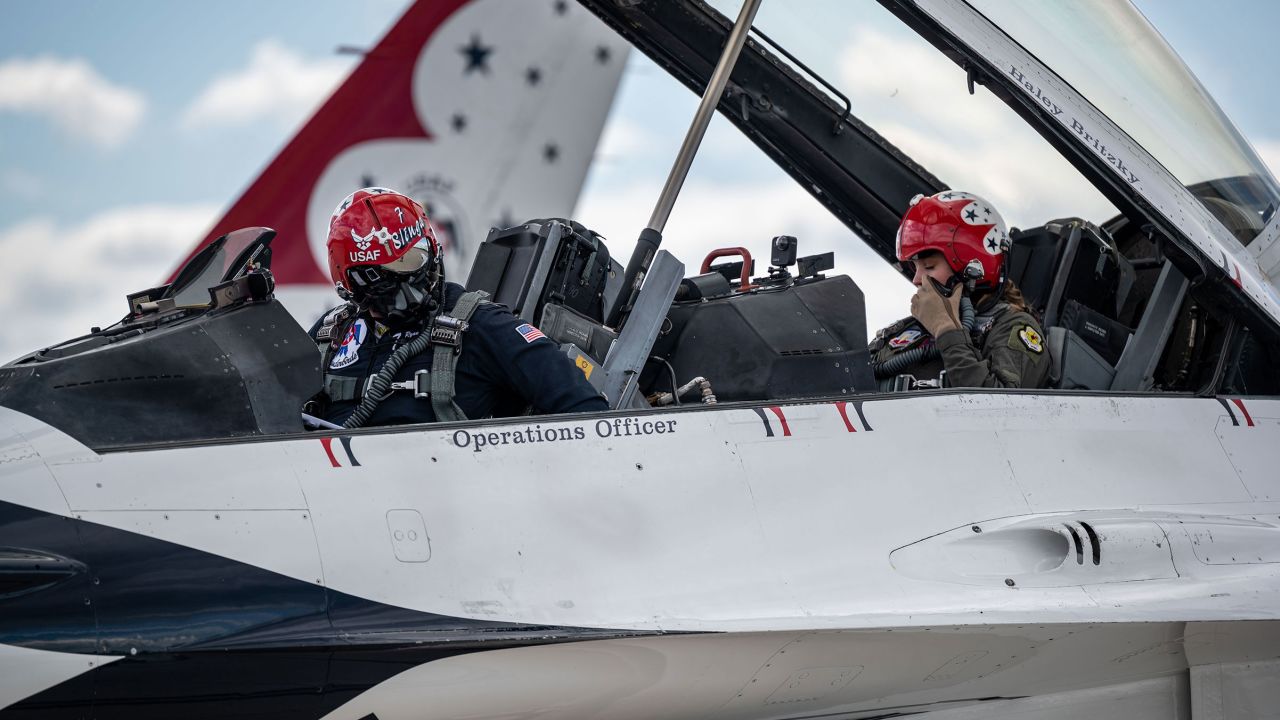
As their jets gracefully whirled past each other with extreme precision, they could be heard whooping and cheering in unison, exchanging quips and remarks about the impressive stunts they had pulled.
Every maneuver is planned down to the second and pored over in extreme detail as soon as the team has landed safely. In the debrief following their rehearsal, the team members walked through a video recording of the flight they’d done moments before, moving frame by frame, offering praise and, at times, constructive criticism of their own flying.
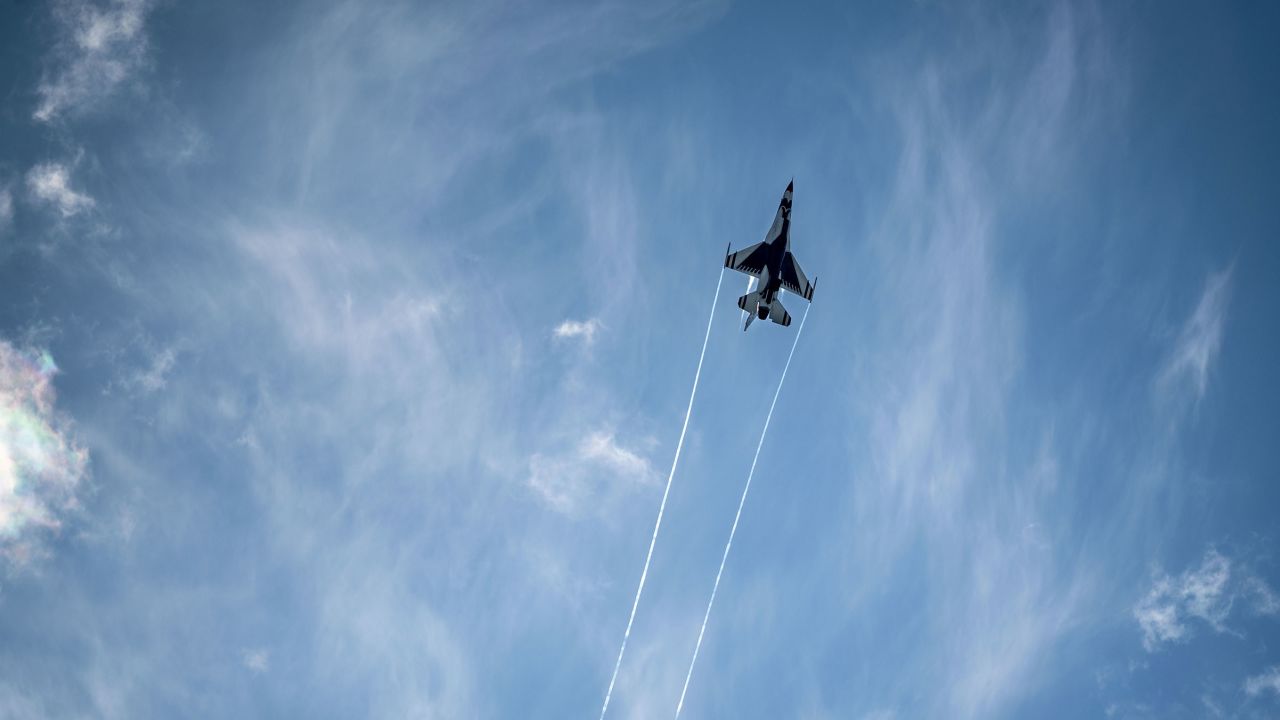
More than once throughout the day, Thunderbirds team members remarked that they were only able to do what they do because of the cohesiveness of their unit. That was made clearer as the pilots worked through their debrief, which was conducted as seamlessly as their rehearsal.
That ability to work on a team is a significant part of what the Thunderbirds look for in pilots applying to join. It was also one of the things repeatedly mentioned by the pilots as to why they love their jobs so much.
There’s “no ego,” Yingling said. Each person gains “an entire family that we’ll take with us forever,” said Capt. (Dr.) Travis “Angry” Grindstaff, Thunderbird #9 and the team’s flight surgeon.
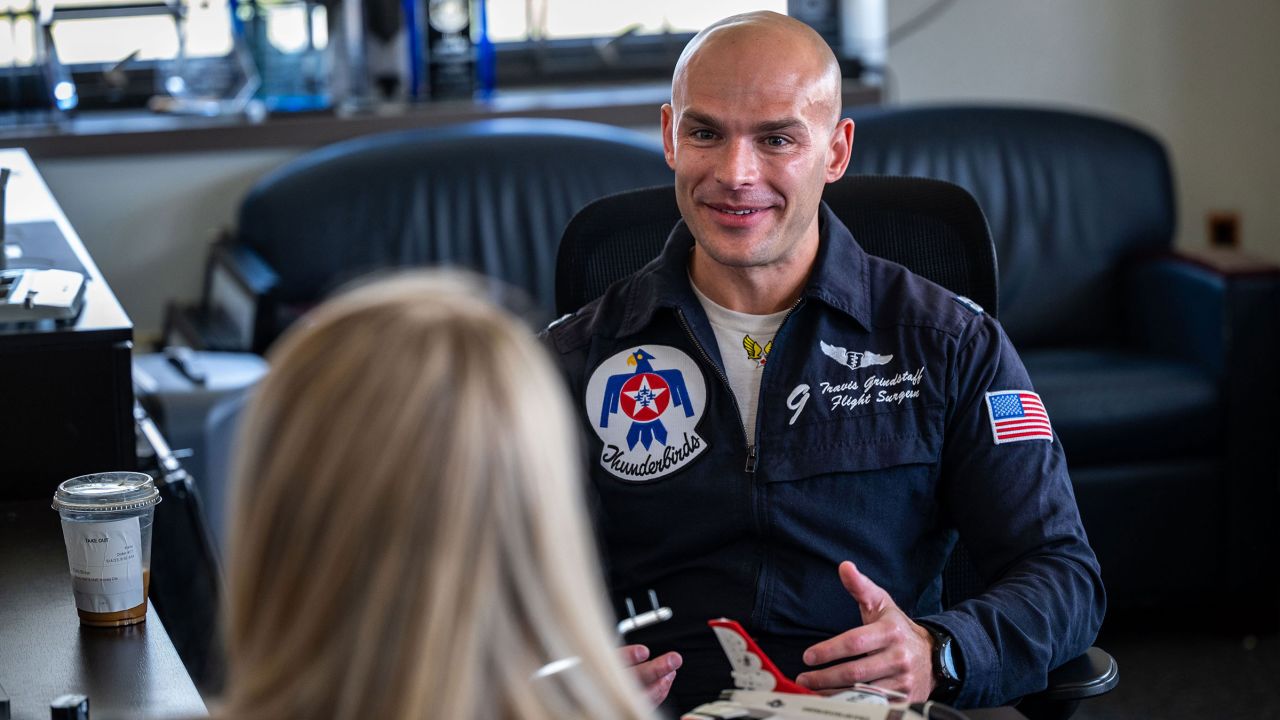
It’s a “small-team mindset on a huge team,” added Capt. Zachary “Zeke” Taylor, Thunderbird #2 and the left wing pilot for the squadron. “Everyone is a go-getter and super happy to be here. They want to be here.”
Sitting around that conference room table at the end of the debrief, all members of the 12-person team spoike of that what drew them to the Air Force, and to the Thunderbirds specifically. Their answers ranged from family ties to service, to hearing about fighter pilots as a kid in school.
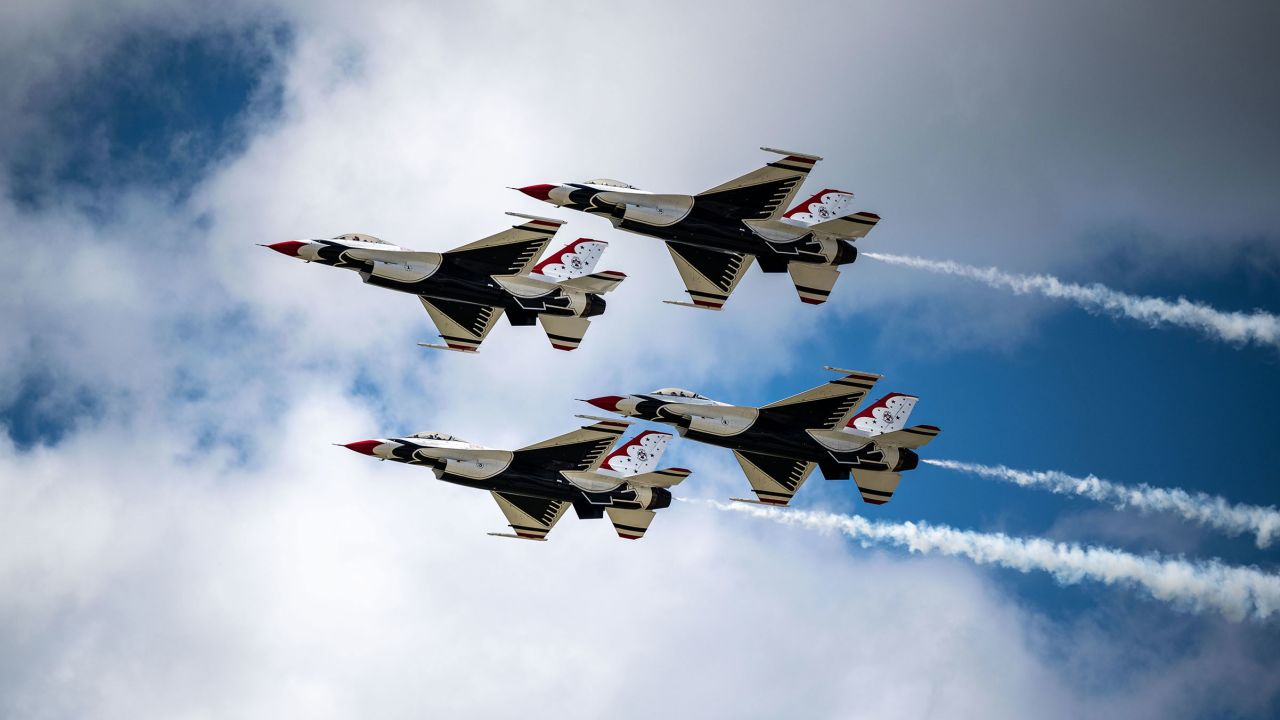
But Grindstaff, like so many throughout the military, said the Air Force seemed like it would provide him a pathway to more opportunities in life. He said he “grew up on a farm in the middle of nowhere, with no money” and saw the service academies as his chance to get an education and a career. So he decided to go to the Air Force Academy, which gave him “all the opportunities I have now.”
“I got to graduate from college and then went to medical school on the Air Force’s dime, got to pursue all my dreams,” Grindstaff said. “And I realized there’s probably a lot of people out there that were similar to me, and what a cool experience it would have been for them to be able to know something that they had, like an academy, in their pocket, that would not only allow them to get an education, but then pursue their dreams and be a part of something like this.”
Read the full article here
